|
First deliveries of the Alfa Romeo 159 are being made to the
Polizia di Stato (Italian State Police) and the Arma dei
Carabinieri (paramilitary Police Force). The new Alfa Romeo
has been chosen to replace the aging but successful fleets
of Fiat Marea’s and Alfa 156’s. A first contract will see
the supply of two hundred Alfa Romeo 159’s
destined for the Polizia, and 61 for the Carabinieri. Each
of these examples will feature a bullet-proof windscreen,
tinted rear windows, satellite navigation system, onboard
computer and other avant-garde equipment. The cost of each
car, pre-prepared along with the unique paint schemes, is 47,000
euros. Each car has an intended lifespan of 6 years or
180.000 km.
The historical wealth of Italian cars used by the Italian
police corps, the most famous of them being the Alfa Romeo
Giulia, have resulted in nicknames which are still commonly
used today. A patrol car belonging to the Polizia is
nicknamed “Pantera” (Panther), one used by the Carabinieri
is nicknamed “Gazzella” (Gazelle) and every other unmarked
car is delightfully referred to as an Owl.
POLIZIA DI
STATO - BRIEF HISTORY
The foundation of the Italian Police dates back to 1852 when
the Corps of the Public Security Guards was established in
the Kingdom of Sardinia. The Corps was directly headed by
the Turin and Genoa Public Security Authorities, that in
this way availed themselves of a police force of their own
for the maintenance of public order and security. With the
Unity of Italy the Corps organization was extended to all
pre-unity former States. The only exception was represented
by Sicily where the Mounted Militiamen Corps, set up by
Garibaldi, continued to operate until 1877 when it was
dissolved and the Corps of the Public Security Mounted
Guards for the Sicilian provinces was established. In 1890
the Corps was named “City Guards” on the basis of an act
according to which the previous organization was not changed
but only adjusted to the new needs deriving from the
adoption in the Kingdom of the new Penal Code and, for the
first time in the Italian system, of the Consolidating Act
of the Public Security Laws, both in 1889.
In addition to the reorganization of the Criminal Police
Service, in 1902 the City Guards set up the Forensic Science
Police Service and carried out Administrative Police and
public rescue activities. On the occasion of the City
Guards’ intervention during the Messina and Avezzano
earthquakes (in 1905 and 1915, respectively) they received
two golden medals for merit. During World War I the City
Guards gave a significant contribution both sending their
men to the front and operating as a territorial force.
|
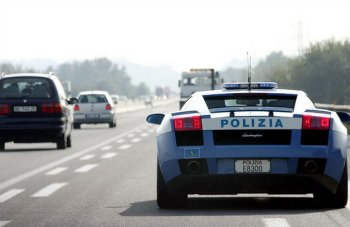
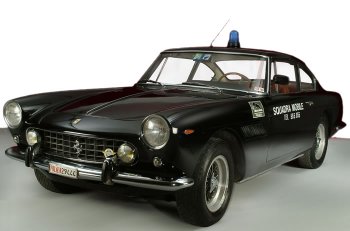
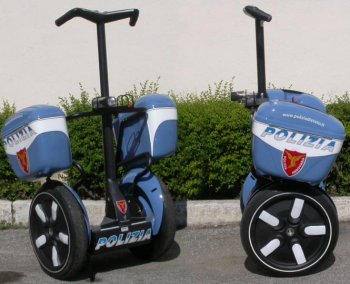
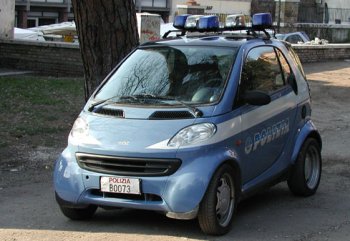
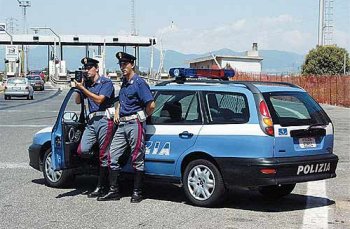 |
|
As well as using rapid
Alfa Romeo models in the pursuit of criminals, the
Italian Police are famous for operating high
performance sportscars including a Ferrari 250 GT/E in
the early 1960s, and the Lamborghini Gallardo today.
Other transportation includes the Fiat Marea, Smart
FourTwo and Segway HT (Human Transporter). |
|
|
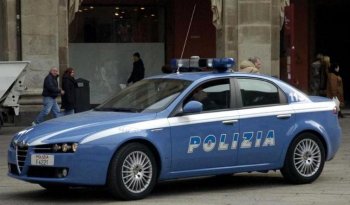 |
|
First deliveries of the Alfa Romeo 159 are being
made to the Polizia di Stato (Italian State Police)
and the Arma dei Carabinieri (paramilitary Police
Force). |
|
 |
|
 |
|
The many branches of
the Italian Polizia di Stato have a very long
historical tradition of using Alfa Romeo models in
their fight against crime, the most famous of them undoubtedly
being the Giulia sedan series. |
|
 |
|
|
In 1919 the
Corps was reorganized and named “Corps of the Public
Security Royal Guards”. It acquired military status and was
characterized by the creation of the rank of the Officials
and by a Unified Command. In parallel, only with regard to
the crime prevention and suppression functions, the
Investigative Agents Corps was set up within the Ministry of
the Interior and placed directly under the Public Security
Authorities (Prefects – Deputy Prefects – Questori – Officials).
As soon as Mussolini took government office he dismantled
the Corps of the Public Security Royal Guards and the
Investigative Agents Corps, by Royal Decree of December 31,
1922, with a view to unifying the Police Forces. The
personnel partly merged with the newly set up “Royal
Carabinieri Specialized Unit for inquire, technical
investigations and surveillance services”.
The personnel assigned to the above-mentioned unit was
trained in Rome at the ad hoc set up Police Technical
School. During the Fascism consolidation phase the Public
Security Authority had no longer a direct control on the
Police Corps. The latter was, in fact, characterized by a
civil system and by a personnel training thanks to which the
Corps became particularly responsive to the community needs.
In this period the Voluntary Militia for the National
Security was reorganized and assigned police functions.
The
Nation felt the lack of an Institution having prevention
tasks. In 1925, the Government re-established an ad hoc
Public Security Corps which was named “Corps of Public
Security Agents”, having a civil status but a military
organization. Personnel, means, materials and logistic
structures which had belonged to the Royal Guards were taken
over by the Corps: the total number of personnel units
amounted to 12,000 men. The decree establishing the Corps
also dismantled the Rome Local Policemen and their
competence in the field of urban police, road traffic,
building, health and trade was given to a “Police Special
Division for the Capital”.
In 1937, the “Police of the Italian Africa” (P.A.I.) were
set up in order to carry out Police duties in the African
regions of the Empire. They were made up of carefully
selected personnel that was trained at the Tivoli (Rome)
School and by the Askaris. The P.A.I., that for years had
been the pride of the Police Armed Forces, distinguished
themselves in the African land but also in the defense of
Rome from the German invasion following September 8, 1943.
Here, the “Luigi Amedeo di Savoia” Battalion heroically
resisted the superiority of the enemy, obtaining many
decorations for military bravery.
The Corps of the Public Security Agents participated in the war operations
and, with the Motorcyclist Batallion at the Greek – Albanian
front, their flag was bestowed a bronze medal for military
bravery. In 1943, the Badoglio Decree envisaged the Corps of
the Public Security Agents’ incorporation into the State
Armed Forces. The personnel supported the Allied Forces and
the “Resistance” obtaining various individual testimonials
of merit and thanks to the “Fiume Mobilized Batallion” their
flag was bestowed a bronze medal for military bravery. By
Viceregal Decree of 1944 the Public Security Agents were
named “Corps of the Public Security Guards”, while keeping
the previous military organization. In 1945 the P.A.I.
personnel was incorporated into the Corps.
In the postwar period the Corps was reorganized and
strengthened with men and means. The “Celere” and Mobile
Units, the Specialties -Traffic, Railway and Border (sea,
air and land) Police - were also set up. In 1959, the Female
Police Corps was established with the limited task of
investigating and suppressing crimes in the field of public
morality, decency and minors. In 1968 the Emergency Public
Service “113” was set up and soon after the Patrolling Units
(“Volanti”) were established within each Questura. The Corps
organization and status remained unchanged until the Reform
Act No. 121 of April 1, 1981 which created the current State
Police. All members of the Corps of the Public Security
Guards, the P.S. Officials and the Female Police Corps
merged into the mentioned body.
|
|
|
|
![]()
![]()